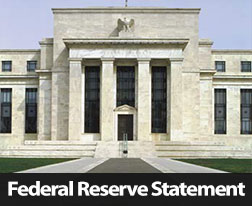 The past week brought encouraging economic news from several sources.
The past week brought encouraging economic news from several sources.
The FOMC statement indicated that the Federal Reserve has not set a date for rolling back its quantitative easing program and ADP reported more private sector jobs added than expected.
While weekly jobless claims were fewer than expected, the national unemployment rate remained elevated:
Monday: Pending Home Sales: The National Association of REALTORS reported that sales contracts fell in June due to rising mortgage rates and a tight inventory of available homes.
Tuesday: The S&P Case-Shiller Home Price Indices showed that national home prices increased by 12.2 percent annually.
All 20 cities used in the 10 and 20 city home price indices posted gains in average home prices. Average U.S. home prices remained approximately 25 percent below their peak in 2006.
Consumer confidence dropped in July to a reading of 80.3 as compared to a revised reading of 82.1 in June. Higher mortgage rates and stubbornly high unemployment rates likely contributed to a cooling of consumer enthusiasm.
Wednesday: The Federal Open Market Committee (FOMC) said in its statement that based on its reading of current economic conditions,the committee had not set a date for beginning to reduce the Fed’s monthly asset purchase of $85 billion in Treasury securities and MBS.
The program, known as quantitative easing (QE), is intended to keep long-term interest rates including mortgage rates lower.
ADP reported that job growth for private-sector jobs exceeded expectations for July; the adjusted reading of 200,000 for July beat expectations of 185,000 jobs added and also surpassed June’s reading of 198,000 new jobs added.
The ADP jobs report is viewed by economists as a preview of the Bureau of Labor Statistics’ Non-farm Payrolls and National Unemployment reports, which are collectively known as the “Jobs Report.”
Thursday: Weekly jobless claims came in at 326,000. This was lower than expectations and the previous week’s reading, both of which were reported at 345,000 jobless claims.
Freddie Mac reported that mortgage rates rose, with the average rate for a 30-year fixed rate mortgage coming in at 4.39 percent as compared to last week’s 4.31 percent.
Average rates for a 15-year fixed rate mortgage came in at 3.43 percent over last week’s 3.39 percent. The average rate for a 5/1 adjustable rate mortgage was 3.18 percent and two basis points higher than the previous week’s 3.16 percent.
Friday: The July Non-farm Payrolls report showed that only 162,000 jobs were added as compared to expectations of 180,000 jobs added and June’s reading of 188,000 jobs added. While housing markets are showing strong improvement, high unemployment continues to be a drag on the economy.
The national unemployment rate for July was 7.40 percent and was lower than expectations of 7.50 percent and June’s reading of 7.60 percent.
What’s Coming Up This Week
This week’s economic news includes the Senior Loan Officer Survey set for Monday, the U.S. Trade Deficit and Job Openings reports for June on Tuesday.
On Wednesday, a report on Consumer Credit will be released and the Weekly Jobless Claims will be out Thursday, along with Freddie Mac’s mortgage rates report. No mortgage or related news is scheduled for Friday.
 Summer seems to be slipping away quickly. And, while you’ve hosted many barbecues on your back deck, you might not have had time to properly take care of it.
Summer seems to be slipping away quickly. And, while you’ve hosted many barbecues on your back deck, you might not have had time to properly take care of it.
